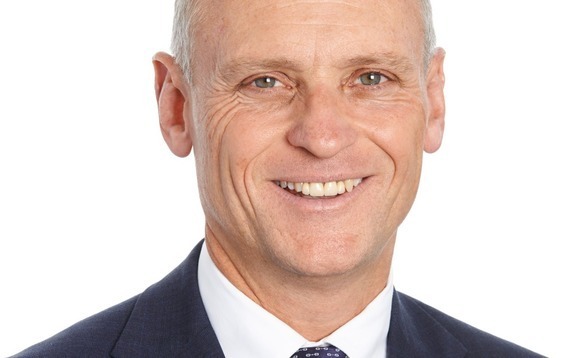
LP interview: Koda Capital

Australian wealth management platform Koda Capital eschews mainstream private equity in favour of more obscure alternatives, but what the firm really wants are managers that understand its needs
Private debt has always been a priority for Koda Capital, an Australian wealth management platform that serves high net worth individuals (HNWIs) and family offices. At different points in time, the asset class has accounted for over 20% of the firm's annual allocation. The traditional equities-fixed income balance remained, but private debt was favoured over typical fixed-income securities.
Post-global financial crisis banking reforms were fundamental to the development of this approach. The big four domestic banks, which had to that point dominated lending, were gradually pegged back by tighter capital and liquidity requirements. A gap appeared in the market and a slew of private debt managers emerged to fill it.
"One of the things we like about private debt is it tends to exhibit lower volatility than other private market assets because it isn't priced as frequently. Volatility is important when you are advising clients on multi-generational wealth. Often, the skill is to keep them invested through the cycle and not get panicked out by volatility," said Paul Heath, Koda's founding partner and CEO.
"And compared to public markets, there is more of an information asymmetry – it is under-researched, so you can have genuine manager skill – and there is less capital available, which creates opportunities for advantageous return profiles. We can get equity-like returns for debt-like security."
This affinity for private debt in an Australian context demonstrates Koda's appetite for niche, uncorrelated assets and for local nuance. The firm has also ventured into water rights and carbon credits trading and even wild-caught fishing licenses – seeding a fund that buys licenses and leases them out – because it made sense in Australia.
In other areas, it goes overseas. Europe is the location of choice for litigation funding, while technology is accessed through manager relationships in Israel and the Nordics. "We ask where we can find expertise with demonstrable ability to add alpha," Heath added. "Over time, we've been able to increase our global investments because we have become better known."
Advisory angle
Koda's origin story is much like that of its local peers. A cluster of independent wealth management platforms emerged in the 2010s through spinouts from private wealth management players. Heath was CEO of JBWere, before and after it was sold to National Australia Bank (NAB) and became part of MLC. He teamed up with Steve Tucker, then CEO of MLC, to launch Koda in 2014.
"Wealth management, especially in Australia, had evolved to become distribution for product as opposed to giving advice. In 2014, when vertical integration was at its zenith, advice was seen as a loss leader for distribution of product," Heath explained. "We felt there was an opportunity for unconflicted advice in the HNWI space and we built Koda from the ground up around that."
Development has been guided by three principles: the firm gives conflict-free advice, only participating in revenue paid for by clients; every team member has equity in the business and there are no external shareholders; and assets under management targets are shaped by a desire to access the best opportunities without losing the culture and feel of a boutique.
There are currently around 120 staff working out of offices in Melbourne, Sydney, Brisbane, and Perth. AUM is about AUD 11bn (USD 7bn) across multiple platforms. Heath notes that they were able "to start with a blank sheet of paper and design the firm based on what we thought the future would be" rather than negotiate the constraints that come when inheriting existing businesses.
Clients should have at least AUD 10m in investable assets, which can include property for personal use. Multi-generational wealth planning is the overriding theme, and while this encourages a long-term investment mindset, the amounts at stake are smaller than in the US, which can make accessing private markets opportunities more challenging.
"We have clients who are smaller than AUD 10m, but it's only at AUD 10bm that you can access the full suite of opportunities," said Heath. "First, many strategies are sophisticated, global, and have a minimum entry level. We build aggregated structures so we can enter as a single line item, but it's a complication. Second, a lot of the opportunities we see come with some element of illiquidity."
The firm compares its model to that of the endowment-minded outsourced chief investment officer (OCIO) service. Programmes are devised on a full asset-allocation basis, although there are often distortions on a case-by-case basis – clients are often overweight property in the context of a traditional portfolio and some own operating businesses that impact asset class exposure.
Heath divides clients into several general groups: those with AUD 5m-AUD 50m of investable assets who allocate that pool of capital to one advisor; those with AUD 50m-AUD 200m who split the money across several relationships; and those who build family offices with in-house investment staff and leverage Koda's capabilities in research or portfolio construction or in specific asset classes.
The right fit?
For almost all clients, there is a core portfolio comprising a mixture of traditional and non-traditional assets that exists in a liquid or semi-liquid construct. Opportunistic elements are layered on top, typically deep alternatives, ideally with evergreen structures and some degree of liquidity.
Mainstream global funds are not on the agenda. Koda prefers niche strategies that offer exposure not normally available in the Australian market. Heath mentions emerging technologies and biotech, but this is also where water rights, wild-caught fishing licenses, and litigation funding come in.
"It tends towards idiosyncratic and uncorrelated returns. We once did catastrophe reinsurance, but the risk-return wasn't right for us. We exited and then re-entered in the last 12 months," he added. "All that is core. On the other side, we do minority stake private equity and strategic relationships with Australian research institutes to support opportunities in technology and healthcare."
As Koda has grown, more doors have opened to international assets. The firm is happy to meet foreign managers visiting Australia, but it stresses the importance of building a relationship first and pitching a product second. The reality of wealth management is that great ideas do not necessarily come at the right time. Twelve months later, however, the timing might make sense.
"It's not as simple as looking at a product in isolation. We must consider the investment thesis and our ability to put it into our portfolios, and the logistical and administrative complexities we must overcome for that to happen. A lot of managers don't appreciate these challenges. They just see a large pool of money and an opportunity set," Heath explained.
In this context, private equity and venture capital can be problematic. Koda aims for relative consistency in the themes that are used to shape portfolios, which means closed-end funds that are marketed for limited periods are not a good fit. The firm tried to work with managers over long periods and bring a "rhyming element" to portfolios, but picking evergreen products is easier.
Other concerns include diversification and reporting and measurement. Heath believes this is difficult for HNWIs to achieve when a private equity firm managing a 10-year fund returns to market after three years, and before the original fund has generated any distributions. Fund-of-funds are a potential solution, but historical discomfort with the double layer of fees doesn't help.
As for reporting and measurement, Koda's commitment aggregation capabilities allow it to manage capital calls and performance fees, while wealth management platforms generally are investing in technology that tracks the impact on unit pricing. However, Heath observed that these aspects "don't lend themselves to private wealth management asset allocation and administration."
Looking for liquidity
The overriding challenge for HNWIs accessing private equity is liquidity. They are not used to 10-year lockups and regard such requirements as an outsize risk. In effect, this desire for liquidity shuts them out from certain investment opportunities – and there is no logical fix apart from a much more vibrant secondaries market or further evolution of the still nascent semi-liquid products space.
Partners Group made a breakthrough in 2011 with the launch of an Australia feeder for its Global Value Fund, which is invested across direct deals, primary fund commitments, and secondaries. There is monthly liquidity, facilitated through a 20% allocation to liquid assets, although this creates a drag on returns. Moreover, redemptions can be gated if there is insufficient liquidity.
Being evergreen and offering some liquidity, the fund is a good fit for some of Koda's clients. Heath credits such products – multiple providers are now active in the Australian market – for removing some barriers to participation, but he stops short of describing them as an industry-wide game-changer. Ultimately, risk appetites vary hugely, and a single semi-liquid solution will not suit all.
"In the private wealth world, there is always a divorce, a death, or a need to fund children into houses. Liquidity plays a pivotal role in managing a private individual's wealth," Heath said. "It is only once your investment capacity reaches a certain level that you can absorb illiquidity, and this creates opportunities in other parts of private markets like private equity and venture capital."
What Koda would like to see from managers is a willingness to build long-term relationships and find ways to collaborate. The ideal introductory meeting is not a one-way sales pitch but a dialogue that addresses the gaps the wealth management platform wants to fill in its portfolio and whether the manager can play a role in that. Koda wants to be more partner than customer.
Collaboration should solve the consistency problem and it may lead to ways of assuaging structural concerns around capital calls and liquidity. The final piece in the puzzle is communication. When making a HNWI comfortable with a new asset class, Koda finds it helps to present not only the investment thesis but also the portfolio manager.
"There is an intimacy you need to develop between the client and the advisor and between the client and people who are ultimately deploying their capital," said Heath. "It requires a different level of service to the institutional market because of the scale and diversity, but it is important, especially in the early days."
Latest News
Asian GPs slow implementation of ESG policies - survey
Asia-based private equity firms are assigning more dedicated resources to environment, social, and governance (ESG) programmes, but policy changes have slowed in the past 12 months, in part due to concerns raised internally and by LPs, according to a...
Singapore fintech start-up LXA gets $10m seed round
New Enterprise Associates (NEA) has led a USD 10m seed round for Singapore’s LXA, a financial technology start-up launched by a former Asia senior executive at The Blackstone Group.
India's InCred announces $60m round, claims unicorn status
Indian non-bank lender InCred Financial Services said it has received INR 5bn (USD 60m) at a valuation of at least USD 1bn from unnamed investors including “a global private equity fund.”
Insight leads $50m round for Australia's Roller
Insight Partners has led a USD 50m round for Australia’s Roller, a venue management software provider specializing in family fun parks.







